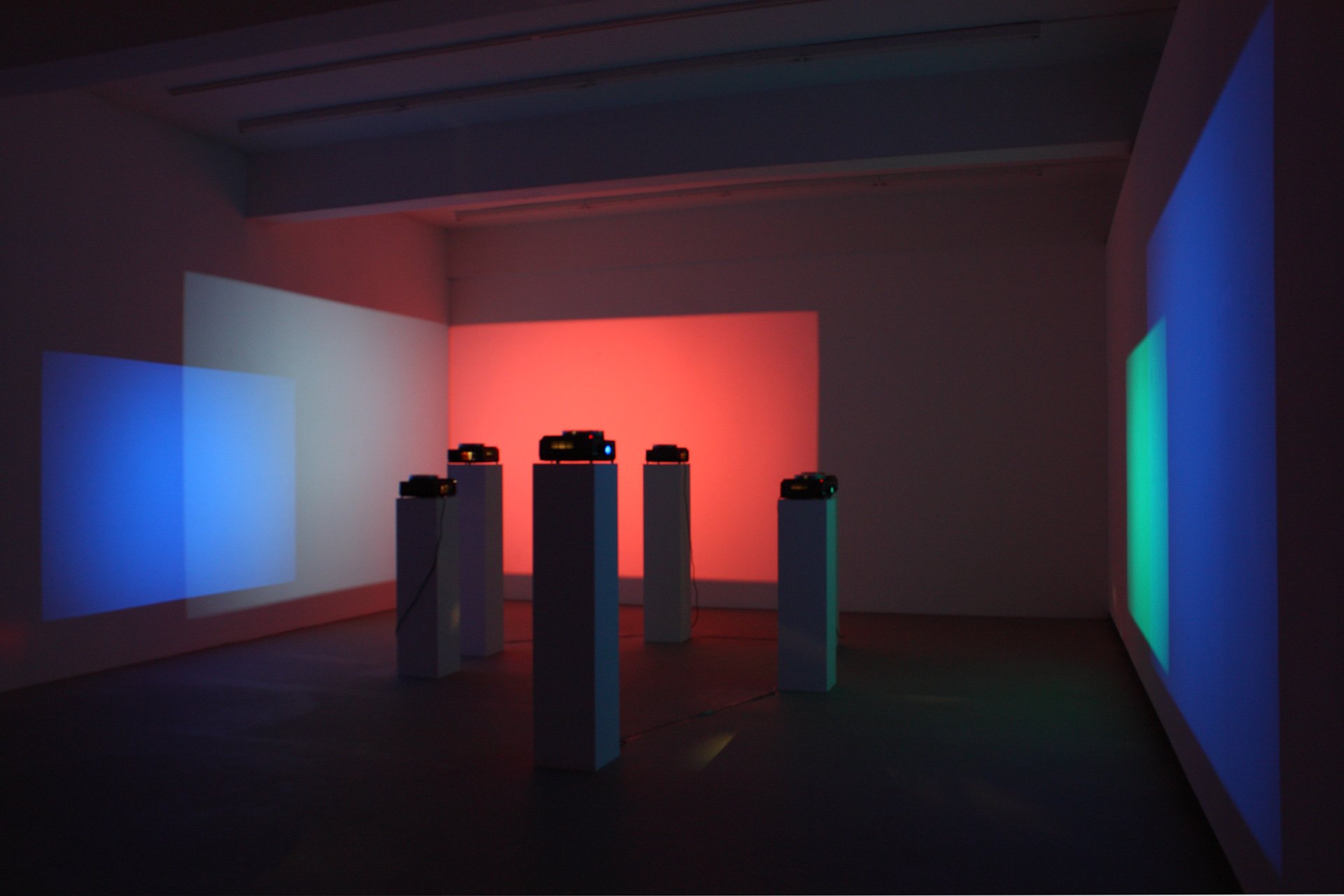
SCHLEICHER/LANGE BERLIN
MERIS ANGIOLETTI: GOLDEN, BROWN AND BLUE
9 March, 2013 - 13 April, 2013









-
SCHLEICHER/LANGE is pleased to present “Golden, Brown and Blue”, an exhibition by Meris Angioletti. This is the first solo exhibition of the artist’s work as part of the gallery’s program, after her inclusion in the group show “Coded Transmission” in the spring of 2012.
Meris Angioletti’s work is situated on the border between art and science. Central to her work are issues of perception, memory, and the unconscious, which the artist studies by triggering synesthetic processes in the viewer. In her installations of light, sound, color, and images, which frequently use cinematographic techniques and the idea of the “expanded cinema,” she questions vision and the process of reception.
Golden, Brown and Blue (2013) consists of six parallel slide projections conceived as a film “dissected in space,” which utilize powerful editorial interventions, such as disassembling, leaving out narrative images, or remixing the individual elements, to arrive at the final overall installation. A constant overlapping and shifting of color and light projections produce a variation of scenes that are complemented by slides with text. The text is based on a dialogue between Andrei Tarkovsky and Tonino Guerra on cinema; the color slide projections are directly linked to Pavel Florensky’s writings on Russian icon painting and its use of color.
Meris Angioletti’s installation is like a silent film consisting of color, light and text. The interaction of color and the sequence of individual textual building blocks result in a kind of choreography. This choreography of text and image represents dynamism and replaces the sequence of images that normally symbolizes the film narrative. The brief lines of text offer a narrative point of departure and recall the intertitles used in silent film. But since they remain fragmentary, a free space results in which the actual narrative element and cinematographic sequences of semantic images step back. In so doing, the viewers are challenged to create their own internal film. The emptied projection surface can be understood as a placeholder, as a free space in both a physical and a metaphorical sense, for his or her personal inner vision. In doing so, the play of color has a trance-like, hypnotic, meditative aspect. By way of the installation, which fills the entire space, the viewer is literally surrounded by the arrangement, becoming part of it. Angioletti creates a kind of spiritual-experimental, silent-light cinema, that invites the viewer to contemplation. In this way, Angioletti’s “film” also borrows aesthetically from Pavel Florensky’s view that a metaphysics of images and light dwells within the icon. Like icons in sacred space, Angioletti places the viewer in a di erent state of consciousness through her colorful light projections. The work reflects the artist’s interest in the intersection and overlapping of mental and external space, as well as their modifications, their combined operation and how they mutually determine and change one another, represented in their entire semantic and aesthetic complexity and a poetry all their own.